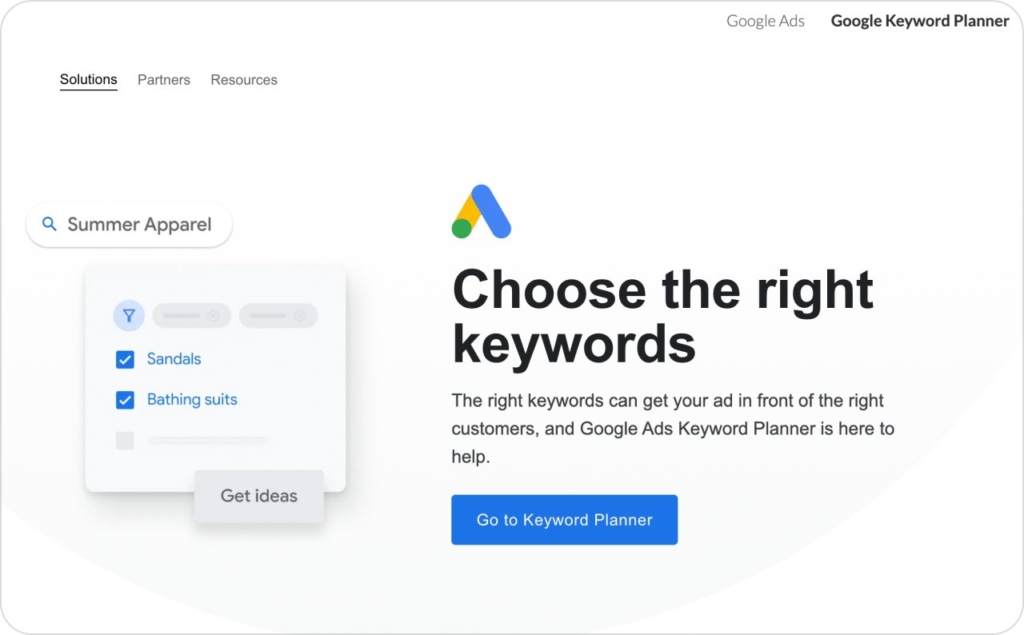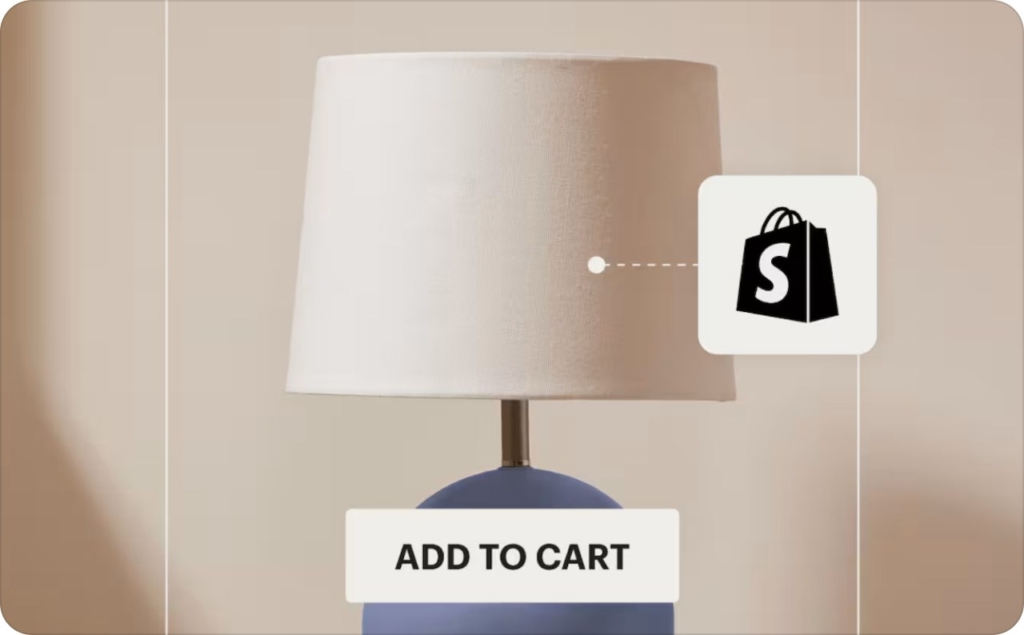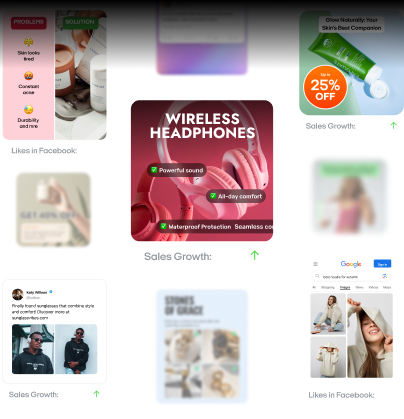How much should a small business spend on ads per month? A practical guide from $300 to $5,000+
Not sure what your ad budget should be? Zeely AI breaks down how much small businesses should spend monthly — from $300 to $5,000+ — with real examples and smart allocation tips.
Wondering how to keep ad costs low without missing out on growth opportunities? Small businesses often spend anywhere from $300 to over $3,000 monthly on ads, depending on the channels they choose and their campaign goals. According to Forbes, 70% of small businesses allocate part of their budget specifically for social media marketing, with over a quarter dedicating 10% to 30% of their overall ad spend to these platforms. This guide will help you strike the perfect balance between cost efficiency and business growth, ensuring your budget supports both visibility and ROI.
We’ll tackle:
- Budgeting uncertainty: How to handle digital marketing, from Google Ads to Facebook Ads, alongside traditional offline advertising
- Overwhelm: Breaking down core cost factors like PPC, social media marketing, and marketing ROI so you can optimize your monthly marketing budget
By the end, you’ll have a full small business ad spend breakdown and a clear path to consistent returns on your marketing investment.

Overview of advertising channels: Digital vs. offline
For small business owners, choosing where to spend their advertising dollars, online or offline, can feel like flipping a coin. One moment, you’re setting up Facebook Ads with detailed targeting; the next, you’re wondering if a local newspaper placement might actually bring in more leads. If this sounds familiar, you’re not alone.
According to recent surveys, over 60% of small businesses struggle to decide how to split their budget between digital and traditional advertising. And that uncertainty often leads to wasted spend, underperforming campaigns, or worse, completely overlooked opportunities.
Digital advertising: Measurable, scalable, built for optimization
Let’s start with the digital side of the spectrum, because this is where small businesses often turn first for fast results, precise targeting, and real-time performance data.
Platforms like Google Ads typically charge per click, with costs ranging between $1 and $5, depending on keyword competition. Meanwhile, running Facebook ads and Instagram ads offer both CPC and CPM pricing, averaging $0.50 to $2 per click — ideal if you’re looking to reach highly targeted audiences with visual content.
If you’re focused on retention and remarketing, email marketing platforms like Mailchimp or Brevo start around $10–$30 per month, and can deliver exceptional ROI with the right subscriber base. On the longer-term side, SEO involves an investment of $500 to $2,000 per month — but yields compound results by improving your visibility in organic search over time.
What sets digital apart is trackability. You can measure performance using Google Analytics, Meta Ads Manager, or conversion tracking pixels. For example, a $1,000 ad spend on Facebook might bring in 400 qualified leads, if the campaign is optimized with compelling creative and smart audience targeting.
Still, digital marketing isn’t “set it and forget it. Costs can spiral quickly if you’re bidding on competitive keywords without proper A/B testing or audience segmentation.

Photo source: Google Analytics
Offline advertising: Tangible, trust-building, and still effective
Despite the buzz around digital, offline advertising remains a powerful tool for local visibility and brand credibility — especially when your audience isn’t always online.
Let’s say you’re running a bakery. A simple flyer campaign can still bring in walk-ins that no Instagram carousel ever could. Flyers and brochures typically cost between $200 and $500 per 1,000 units, including distribution. Local newspaper ads can range from $200 to $1,500 per week, depending on publication size and placement.
Then there’s radio and local TV — more expensive, but still relevant. A radio spot might cost as little as $200, while a 30-second local TV ad could run you $1,500 to $5,000, especially during prime hours.
Unlike digital, offline campaigns rely on indirect performance signals: coupon redemptions, foot traffic increases, or good old-fashioned word-of-mouth. But what you lose in tracking, you gain in local brand presence. For small businesses that thrive on neighborhood reputation, this visibility can be invaluable.
Take this case: A local fitness studio split its $1,200 ad budget evenly between Facebook Ads and a flyer drop. The digital campaign delivered 60 leads at $10 CPA, while 3,000 distributed flyers generated 32 direct walk-ins. Combined, the integrated strategy delivered a 2.3X ROI — nearly double what they achieved with digital-only campaigns in the previous quarter.
Digital vs. offline: A quick ROI & tracking comparison
| Channel | Tracking strength | Estimated ROI range |
| Google Ads | 5/5 | 200%–500% |
| Facebook/Instagram Ads | 4/5 | 150%–400% |
| Email marketing | 5/5 | 300%–700% |
| Flyers | 2/5 | 80%–150% |
| Local newspapers | 2/5 | 50%–120% |
| Radio/TV | 3/5 | 100%–250% |
As you can see, digital methods excel in measurability, while offline methods shine in community engagement and brand lift.
So, which channel is right for you?
The answer isn’t digital or offline — it’s both. Think of your marketing as a layered system. Your Facebook Ads drive website traffic. Your Google Ads convert high-intent buyers. Meanwhile, flyers and radio spots reinforce your message in the real world.
A local dental clinic, for instance, might run Google Ads targeting “emergency dentist near me” while placing radio ads during morning commutes and handing out flyers at community events. Together, these efforts increase visibility, credibility, and appointment volume.
The key to success lies in building an integrated advertising strategy. Match your campaign objectives with the right platform, continuously test your messaging, and adjust based on real performance — not assumptions.
Up next: Now that you’ve seen how advertising channels compare, we’ll explore the key factors that influence your advertising costs — including your business size, industry, location, and goals — so you can budget smarter and scale with confidence.
Factors influencing advertising costs
For many small businesses, advertising costs fluctuate wildly — not because you’re doing something wrong, but because a complex web of factors determines how much you should invest. From business size and market competition to location, campaign goals, and ROI expectations, these variables shape your budget in powerful ways. Let’s unpack the major cost determinants and show you how to plan smarter.
Business size and revenue: Your budget baseline
Smaller businesses often feel overwhelmed trying to figure out how much they should spend on ads. A proven starting point? Use a percentage of your revenue. Industry research shows that small businesses typically allocate 5–15% of annual revenue to marketing. If you’re just starting out and hungry for visibility, aim closer to 10–12%. More established brands often stick to 5% to maintain awareness.
Example: A boutique agency with $500,000 in revenue might allocate $50,000 — 10% for growth-stage campaigns, while a mature local brand could work with just $25,000 and rely more on repeat business.
Try this: Use an online marketing budget calculator to map out your spend based on revenue and growth goals. It gives you a realistic, data-backed ceiling. You can also start using AI in programmatic advertising to spend less on ads.
Industry competitiveness and geographic location: Same ad, different cost
Why does a plumber in Chicago pay more per click than one in Boise? Because industry competitiveness and geography heavily influence CPC and CPM. Highly saturated sectors like insurance, law, or finance often see CPCs above $25, while niche local businesses might pay under $3.
Urban density also matters. If you’re targeting ads in New York City, expect to bid against dozens of competitors — raising your cost. Meanwhile, suburban or rural areas often provide lower-cost impressions due to less competition.
Pro tip: Use platforms like Google Keyword Planner or Meta Ads Manager to research average ad costs in your location and niche. Knowing the competitive landscape helps you prioritize high-ROI channels.

Photo source: Google Keyword Planner
Advertising goals and ROI: Spend with intention
One of the biggest mistakes small businesses make is setting ad budgets without defining outcomes. Are you aiming for conversions, traffic, brand awareness, or lead generation? Each goal has a different cost profile — and not knowing that upfront leads to wasted spend.
If you want fast results e.g., purchases or sign-ups, you’ll likely use Google Ads or Meta campaigns with higher CPCs but measurable ROI. If your objective is brand lift or long-term visibility, strategies like content marketing or SEO might deliver better results over time — even if slower.
Case in Point: A fitness coach spent $1,000 on a Facebook lead gen campaign and acquired 40 leads — $25 CPL. When they switched to an awareness campaign using video views, the same $1,000 reached 4x more people — but with fewer direct leads.
What to track: Tie your spend to KPIs like Cost per Acquisition, Return on Ad Spend, and conversion rate. Use tools like Google Analytics or HubSpot to analyze performance and optimize continuously.
Average costs and budget examples
Ever wondered whether your monthly ad budget is too high — or too low? You’re not alone. Many small business owners struggle to find a reliable benchmark when it comes to ad spend. And with thousands of conflicting articles online, it’s hard to know which numbers actually apply to your business size, industry, and goals. This section breaks it down for you. You’ll see real numbers, realistic budget examples, and clear distinctions between lean startup strategies and high-growth campaigns. Whether you’re investing $500 or $5,000 a month, you’ll walk away knowing exactly how to model your own advertising budget.
Digital advertising cost estimates for small businesses
Let’s start with digital. It’s cost-efficient, measurable, and scalable — which is why most small businesses start here. But digital advertising costs vary based on your platform, audience targeting, and industry competitiveness.
On Google Ads, small businesses typically pay between $1–$5 per click depending on their niche. Legal and finance sectors can see CPCs well above $15, while local services or niche ecommerce brands might pay less than $2. Social media platforms like Facebook and Instagram offer slightly lower CPCs, ranging from $0.50 to $2 per click, making them ideal for awareness or lead-gen campaigns.
Here’s a quick comparison:
| Platform | Avg. CPC | Avg. CPM | Best use case |
| Google Ads | $1–$5 | $6–$12 | High-intent search traffic |
| Facebook Ads | $0.50–$2 | $5–$10 | Engagement + remarketing |
| Instagram Ads | $0.70–$2.50 | $7–$15 | Visual product promotion |
| LinkedIn Ads | $5–$8 | $30–$50 | B2B lead generation |
Most small businesses allocate 60–80% of their ad budget to digital due to its higher ROI measurability. If you’re spending $1,000 per month, you might devote $600–$700 to paid social and Google search, with the rest split between SEO and email.
Tip: Don’t forget to include creative production and PPC management fees, which can add an extra 10–20% depending on whether you outsource or DIY.
Offline advertising cost estimates
Just because it’s not online doesn’t mean it’s outdated. Offline advertising — especially local — still works if you’re targeting a specific geography or demographic. But costs here are less standardized.
A local newspaper ad can run between $200 to $1,500 per placement, depending on size and circulation. Flyer printing and distribution might cost $0.05–$0.20 per flyer, plus logistics or placement fees. Radio ads typically cost $200–$5,000 per week, depending on time slots and region, while billboards in smaller towns may start around $750/month, but spike over $5,000/month in metro areas.
Here’s how these compare to digital:
| Offline channel | Typical cost | Notes |
| Local newspaper ad | $200–$1500 per issue | Good for brand awareness |
| Flyer distribution | $0.05–$0.20 per flyer | Best for hyperlocal promotion |
| 30 sec radio ad | $200–$5000/week | Pricing varies by market size |
| Local billboard | $750–$1500/month | High visibility, lower targeting |
If you’re allocating $2,000/month and plan to split between digital and offline, a 70/30 split may give you broad reach with trackable performance online, and strong local visibility offline.
ROI tip: Always compare cost per acquisition across both channels. A $1,500 newspaper ad might bring 20 walk-in clients, while a $500 Facebook campaign might yield 40 email leads. The value of each depends on your funnel.
Low-budget vs. growth-stage budget scenarios
Let’s make it practical.
Scenario A: Low budget — $1,000/month:
You’re a local pet grooming startup. Here’s how you might divide your spend:
- $400 on Facebook Ads — local radius targeting
- $300 on Google Search Ads — branded + service keywords
- $200 on flyer design + neighborhood distribution
- $100 reserved for boosting Instagram posts
Scenario B: Growth budget — $5,000/month:
You’re a regional ecommerce brand scaling up.
- $2,000 on Google Ads — search + shopping campaigns
- $1,200 on Meta Ads — retargeting and lookalikes
- $700 on email campaigns and automation tools
- $600 on content + influencer partnerships
- $500 for seasonal local print ads
Both scenarios work. The difference lies in how you distribute spend by objective, and how well you track metrics like CPC, CPM, CTR, and ROAS.
How to set your advertising budget
Setting an advertising budget can feel like guesswork — but it doesn’t have to be. A well-structured, flexible plan helps you spend with purpose, monitor results, and improve over time. Whether you’re running your first campaign or scaling across multiple platforms, this section gives you a step-by-step framework to plan your marketing spend, track ROI, and adjust based on real performance data.
Start with a revenue-first baseline
For most small businesses, the starting point is your revenue. A common benchmark is to allocate 5–10% of gross monthly revenue to marketing. For growth-focused businesses in competitive spaces, this can go up to 12–15%.
But what if you’re just getting started and don’t have stable revenue yet? You can still build a starting budget. Choose a fixed test amount, like $500/month or base your spend on customer lifetime value. For example, if a customer is worth $200 over time and you’re willing to spend up to $50 to acquire one, a goal of 10 new customers sets your starting monthly budget at $500.
Need a quick gut-check? If your cost per lead or sale exceeds 20% of your average order value, it’s a red flag that you’re overspending — or not targeting effectively.
Determine clear, measurable marketing goals
Your budget should match your goals. That means identifying exactly what you want to achieve — brand awareness, website traffic, sign-ups, or conversions — and assigning value to each. This is where SMART goals come in: specific, measurable, achievable, relevant, and time-bound.
Set key performance indicators that reflect your goals. Examples include cost per click, click-through rate, cost per acquisition, and conversion rate. If you ran past campaigns, use that data to forecast new targets. No history? Use platform averages: e.g., Facebook’s average CPC ranges from $0.50–$2, and Google Ads often runs between $1–$5 per click.
Here’s a simple formula for first-timers:
- Define your average customer value
- Pick a realistic CPA goal
- Multiply that CPA by your target number of new customers
- That gives you a data-backed starting point.
Allocate across channels strategically
Split your advertising budget based on where your audience spends time and what channels match your goals. A service-based business might lean heavier on Google Search, while a visual product brand could prioritize social media ads on Instagram or TikTok.
Use historical CPC, CPM, or CPA benchmarks to guide spend. Run A/B tests to compare outcomes between platforms, creatives, or targeting strategies. Let performance data — not guesswork — drive your mix.
If a platform eats 50% of your budget but delivers only 10% of conversions, adjust. The same goes for seasonal shifts: a retail business may allocate more toward local ads during holidays, and cut back during slower months.
Using AI for your small business can significantly boost efficiency, creativity, and growth. How AI can help small businesses includes automating routine tasks, enhancing customer service with chatbots, and providing data-driven insights for better decision-making. By adopting a creative automation platform, small businesses can have automated ad creation, manage marketing campaigns more easily, and maintain a consistent brand presence — saving time and costs while increasing impact.
Track performance and adjust as you go
Once you launch your campaigns, monitoring is non-negotiable. Use built-in analytics tools like Meta Ads Manager, Google Ads dashboards, or third-party ROI calculators to track every dollar spent.
If your ads underperform — say, low clicks or high CPA — take action:
- Pause or edit underperforming ads
- Narrow your targeting
- Lower your bids
- Shift spend to top-performing channels
Advertising success isn’t about setting a perfect budget once. It’s about refining it continuously.
Can you do this yourself?
Yes — most small business owners can handle basic budgeting and tracking using free tools and platform planners. If you’re running multiple campaigns or need deeper optimization, consider a freelancer or lightweight agency support.
Tips for reducing advertising costs & maximizing ROI
Up to 50% of small business ad budgets are wasted — mostly due to poor tracking and inefficient targeting. If you’ve ever felt like your marketing dollars vanish without results, you’re not alone. But here’s the good news: you don’t need a bigger budget to see better ROI. You need a smarter, more strategic approach to how you spend.
Leveraging free or low-cost tools
Start with what’s free — or almost free. Organic channels like social media, email marketing, and content creation can drive serious results if used consistently. You don’t need a full agency or designer to get started. Platforms like Canva let you create eye-catching graphics with drag-and-drop simplicity. Tools like Mailchimp or Sender allow you to run automated email campaigns that nurture leads without draining your wallet.
Take a local bakery as an example. Instead of paying for ads, they used Instagram Reels, giveaways, and customer tags to grow their followers by 300% in two months. That organic visibility drove in-store visits and doubled their weekend revenue — at zero media cost.

Photo source: MailChimp
Use A/B testing to eliminate waste
Spending money on ads that don’t convert? That’s not an investment — it’s a leak. A/B testing helps you fix that. By testing ad elements like headlines, images, calls to action, or even button colors, you discover what actually works. Then you can pause what doesn’t.
According to HubSpot, brands that A/B test their ads see up to 25% higher conversions and lower CPA. Try testing one variable at a time and track the results in Google Optimize, Meta Ads Manager, or the built-in tools many email platforms offer.
Let’s say you swap “Buy Now” for “Try It Free.” One business saw a 20% drop in CPA from just that change. It’s the kind of insight that turns average campaigns into optimized ones — without adding to your budget.
Reallocate budget to what performs
Once you know what works, lean into it. Pause low-performing campaigns — even if they looked great on paper. Instead, shift those dollars to top performers. Watch metrics like CTR, conversion rate, and ROAS to decide where to reinvest.
Set up a simple weekly budget review. If your Google Ads campaign is costing $4 per click but only converting at 1%, it may need a better offer or landing page. On the flip side, if your Instagram ad delivers $10 in revenue for every $1 spent, give it more room to scale.
Retarget and reach lookalikes
Want to stretch your best-performing ads even further? Use retargeting and lookalike audiences. Retargeting lets you re-engage site visitors who didn’t convert. Lookalikes allow you to reach new people who share traits with your best customers.
These audiences are warm and primed — meaning lower acquisition costs and higher ROI. In fact, retargeting ads typically cost 30–50% less per conversion than cold traffic campaigns.
Conclusion & next steps
Advertising on a tight budget doesn’t mean you have to compromise on results. With the right strategy, you can spend smarter, track better, and unlock consistent growth. Whether you’re just starting out or fine-tuning existing campaigns, the principles outlined in this guide give you a foundation to make data-backed, cost-efficient decisions.
Here’s your fast-track checklist to start optimizing your ad spend today:
- Define clear marketing goals tied to your business objectives and revenue targets
- Set a flexible, performance-based budget using industry benchmarks and baseline calculations
- Allocate across channels strategically, doubling down on what delivers and adjusting regularly
- Use free or affordable tools to reduce design, distribution, and management costs
- Test and track performance continuously with A/B testing, analytics platforms, and weekly reviews
- Reinvest in what works — whether it’s a high-ROI ad set, an email flow, or a retargeting audience
The path to better ROI isn’t about spending more — it’s about making each dollar work harder, smarter, and with purpose. You’ve got the tools. Now it’s time to act.
Also recommended



